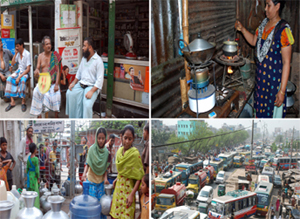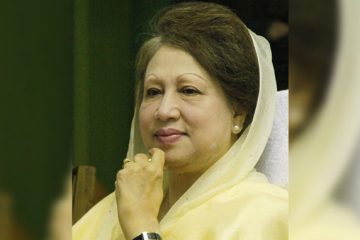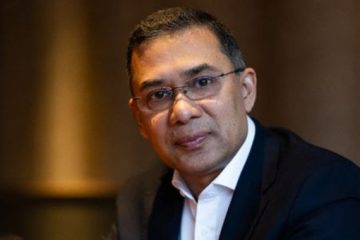 Life in the capital turned miserable with mercury rising to a boiling point, power cuts becoming seemingly never ending and water taps and gas burners drying up amid an acute crisis of utilities.
Life in the capital turned miserable with mercury rising to a boiling point, power cuts becoming seemingly never ending and water taps and gas burners drying up amid an acute crisis of utilities.
A nagging traffic congestion added to the woes, forcing the city’s 13 million people to pass some of the worst times in their living memories.
Officials said a growing demand gap worsened the crisis at the approach of summer, as the existing utility infrastructure can meet 60 per cent of the capital’s power demand, 80 per cent of its water need and some three-fourths of gas requirement.
“Large parts of the city don’t have gas, water and power supply two-thirds of a day,” said a Dhaka City Corporation official.
A massive shortfall of gas first triggered the crisis, with hundreds of thousands of cooking burners becoming the first victim followed by power generation and water supply.
“Gas crisis has sharply cut down power output in state-owned plants. As a result, the city gets only 60 per cent of its actual electricity demand,” said a power official.
“The woes have been compounded with the rising of temperature to nearly 40 degree celsius midway through this month and diversion of power to the rural areas for boro paddy farming,” he said.
Everyday since early this month, the Power Development Board has been diverting at least 1,000 megawatt of power — or one-fourth of the country’s total generation — to villages to operate pumps for irrigating farmland.
Rising temeperature also spiked use of fans and air coolers, which guzzle more power than any other electronic or electric appliances.
Power crisis coupled with scorching sun also brought the city’s water supply infrastucture down to its knee, shutting down hundreds of thousands of household pumps better parts of the day.
Dhaka Wasa, which supplies running water to the residents, said power crisis has also cut lifting of underground water by its 546 deep pumps.
“We have the daily capacity to supply 1.95 billion litres of water to the capital against a demand of 2.20 billion litres,” said Taqsem A Khan, its managing director.
“But due to the power crisis we cannot ensure maximum supply,” he said, adding the layer of water in underground aquifers is also going down fast, making it hard to lift water at a desired pace.
He said hot summer has almost dried up rivers that supply 13 per cent of the city’s water and the lack of rains means the underground aquifers, source of the rest 87 per cent water, have not been replenished.
While residents hope that rains in the coming month would ease water crisis to a great extent, they see no end to the gas crunch that worsened since last winter.
“Titas officials had said poor gas pressure was due to the winter. But even in hot days, we get gas supply only in the morning and evening,” said Rubina Alam, a resident of city’s Jurain area.
Officials of Titas, which is the lone supplier of gas in the city, said there is no way to escape from the current crisis, as soaring demand has outstripped supply by at least 20-30 per cent.
“And there is also no short-cut remedy as the country has not seen new explorations for years. We have to manage the demand with whatever supply we get from our gasfields,” said a Titas official, requesting anonymity.
The official said the problem of low gas pressure has now affected all parts of the sprawling metropolis . He said Titas has urged the government to shut down CNG filling stations throughout the day to offset the crisis.
A gas-guzzling fertiliser factory is expected to be closed down temporarily to divert its supply to the capital, he said, adding: “It is now up to the government to make decision as both are tricky issues.”
Petrobangla supplies more than 1,960 million cubic feet of natural gas a day against the demand of around 2,500 million cubic feet of gas. Demand is growing nearly 10 per cent annually due to a booming economy.
Traffic jams, meanwhile, worsened as record number of cars and buses are hitting the capital’s narrow lanes every day — thanks largely to a rapid increase of nouveu riches in the country.
The Bangladesh Road Transport Authority said last year around 100 cars, microbuses and buses were registered in the capital every day.
The government has staggered weekly holidays for shops, shopping arcades and commercial establishments after dividing the capital into seven zones. It also set different office timings for schools and offices.
Dhaka Metroplitan Police has deployed more law enforcers on to the streets and demarcated the main arteries in several lanes as part of a wide ranging moves to manage traffic.
But nothing seemed to have worked amid an influx of new cars every day. Lack of mass transit system in the ever expanding city has rubbed salt to the wounds.
“People like us who use public transports suffer most as we have to wait in queue before a bus arrives,” said Ahsan Habib, a private banker. “There is no respite even if we board a bus as we endure another round of suffering due to the jam.”




















